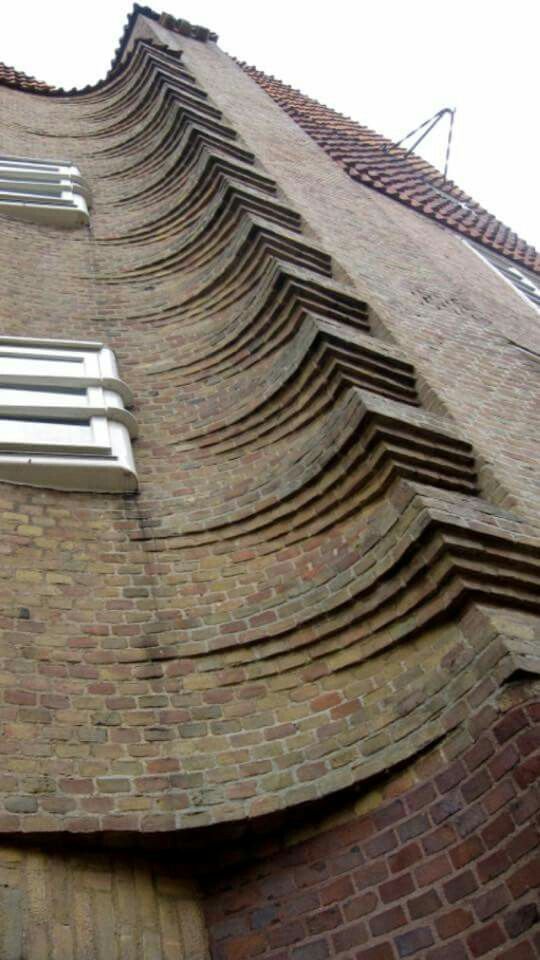#15285. Undulating Brick Facade: Fluidity in a Static Material

Before us is an impressive example of experimental brickwork on a building facade, where traditional building material acquires remarkable plasticity. The architect has created an effect of wave-like movement in the brick wall, forming an expressive rhythmic pattern that disrupts the conventional static nature of brick architecture. The wall seemingly "flows," creating an illusion of softness in a rigid material.
Particularly noteworthy is the technical complexity of execution: each brick in the undulating projections has been carefully calculated and laid with precision accuracy. The relief protrusions form a vertical line that visually elongates the facade and gives the building a dynamic character. The contrast between smooth, modern window openings and the textured brick surface emphasizes the dialogue between traditional masonry craft and contemporary architectural solutions.
The color palette of the brick—ranging from ochre to terracotta hues—creates a warm, living surface that changes its appearance depending on lighting and viewing angle. The composition is crowned with traditional tile roofing, indicating the architect's desire to combine experimental form with elements of traditional architecture.
When designing your own home, such a technique can be used as an accent element on the facade—not necessarily for the entire surface. Even local application of such masonry can create a memorable architectural image. It's important to consider that such work requires high masonry craftsmanship and careful calculations, but the result is worth the effort, transforming a utilitarian structure into a work of architectural art.